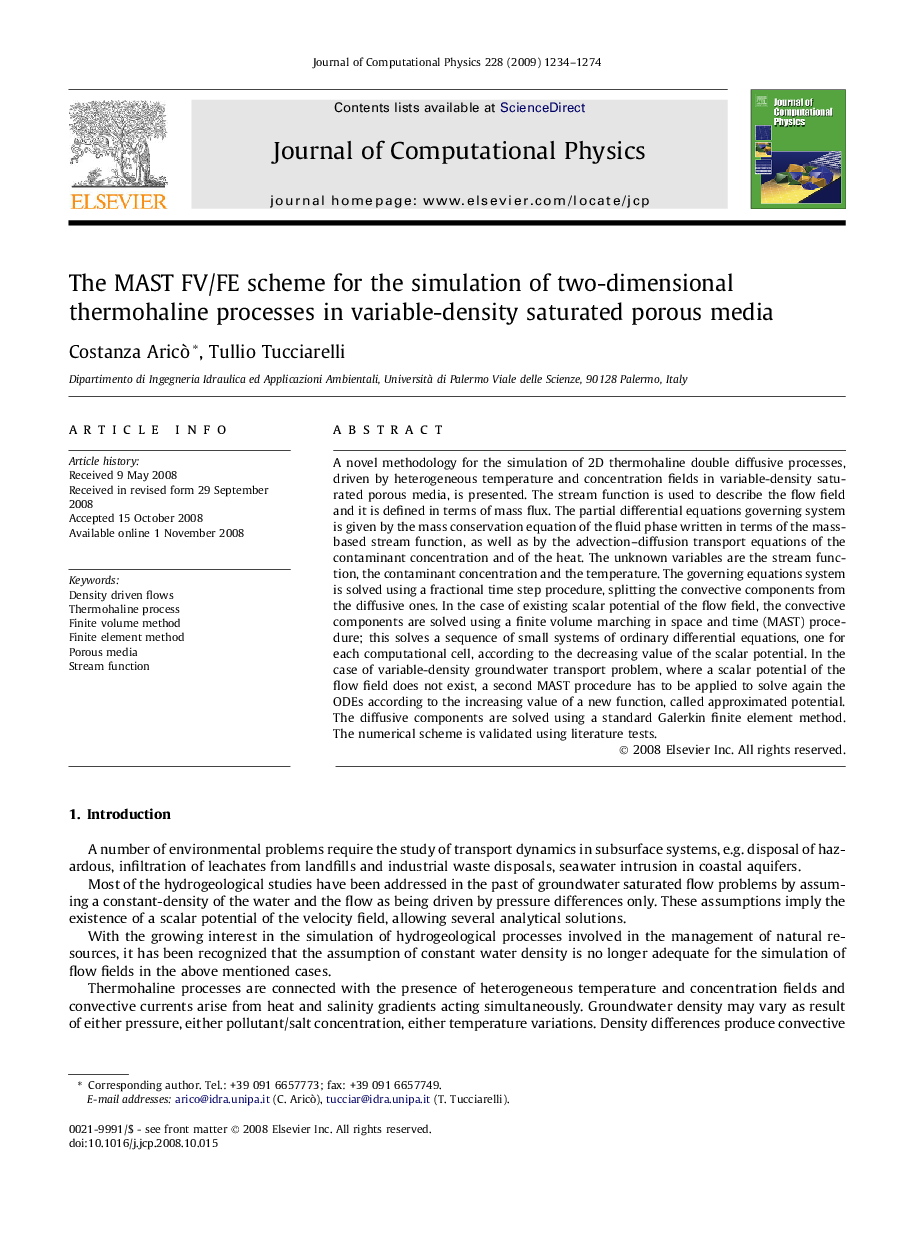| Article ID | Journal | Published Year | Pages | File Type |
|---|---|---|---|---|
| 520918 | Journal of Computational Physics | 2009 | 41 Pages |
A novel methodology for the simulation of 2D thermohaline double diffusive processes, driven by heterogeneous temperature and concentration fields in variable-density saturated porous media, is presented. The stream function is used to describe the flow field and it is defined in terms of mass flux. The partial differential equations governing system is given by the mass conservation equation of the fluid phase written in terms of the mass-based stream function, as well as by the advection–diffusion transport equations of the contaminant concentration and of the heat. The unknown variables are the stream function, the contaminant concentration and the temperature. The governing equations system is solved using a fractional time step procedure, splitting the convective components from the diffusive ones. In the case of existing scalar potential of the flow field, the convective components are solved using a finite volume marching in space and time (MAST) procedure; this solves a sequence of small systems of ordinary differential equations, one for each computational cell, according to the decreasing value of the scalar potential. In the case of variable-density groundwater transport problem, where a scalar potential of the flow field does not exist, a second MAST procedure has to be applied to solve again the ODEs according to the increasing value of a new function, called approximated potential. The diffusive components are solved using a standard Galerkin finite element method. The numerical scheme is validated using literature tests.
